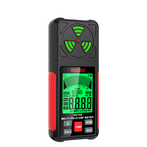How to use digital multimeter to test PT100 temperature sensor
A multimeter is a multi-purpose electronic measuring instrument that can have many special functions, but its main function is to measure voltage, resistance, and current. Multimeters are divided into digital multimeters and traditional multimeters with pointer electromagnetic deflection.
Measuring resistance with a digital multimeter is very simple. Simply set the gear to the ohm range and read the value. The resistance range is divided into seven levels: 200 Ω, 2k Ω, 20k Ω, 200k Ω, 2M Ω, and 20M Ω. When measuring, place the range conversion switch in the Ω range, insert the black probe into the COM socket, and insert the red probe into the V/Ω socket to read. However, it should be noted that when measuring resistance in a circuit, the power should be cut off.
If the resistance value is 10K, set the gear of the digital multimeter to 20K (taking the gear with the highest resistance value and the closest resistance value can obtain the maximum measurement accuracy), then insert the black probe into the COM hole (black), insert the red probe into the V Ω hole (red), and contact the resistor 2 with the probe.
It should be noted that if the resistance value is high, do not touch the second end of the resistor with both hands, because the human body also has resistance, and touching the second end is equivalent to parallel connection of the measured resistor and the human body resistance, which will cause testing errors. It is okay to touch one hand, so that the resistance reading can be obtained.
How to use a digital multimeter to measure PT100? The first step is to adjust the digital multimeter to the 200 ohm range, and then use the two pens of the multimeter to tap the two pins of PT100. If the digital display screen shows more than 100 ohms and the data is stable, it proves that the measured PT100 temperature sensor is a normal product. The above is the specific testing method






